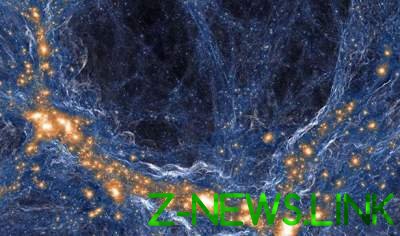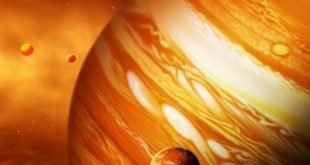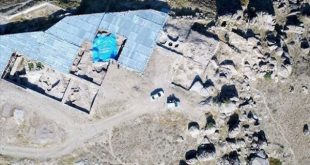 The space contained an unusually few large, active galaxies.
The space contained an unusually few large, active galaxies.
Observations of the oldest galaxies of the Universe have helped astrophysicists to open another “space desert” – a sphere with a diameter of approximately 500 million light-years away in the constellation of Pisces, almost completely devoid of stars. Photos of this anomaly was published in the Astrophysical Journal.
“The presence of a zone of emptiness in the young Universe dramatically changes our perception about how she became transparent and how were born the first galaxies. If our observations are correct, then we can talk, or that the matter distributed in the universe is much more heterogeneous than we previously thought,” says Steven Furlanetto (Furlanetto Stephen) from the University of California at Los Angeles (USA).
Today believe cosmologists, matter distributed in the Universe uniformly, but in a giant “web” – related to each other threadlike accumulations of visible and dark matter, separated by a giant space “deserts”. These voids and clusters of matter are the result of the existence of a kind of “echo” of the Big Bang, the so-called baryon acoustic oscillations, matter distribute unevenly across the rapidly expanding Universe.
Cosmological theory describing the formation of this web, fairly well predict the position and size of modern galaxies, however scientists have recently discovered some serious discrepancies. For example, close to our galaxy, scientists have found an unusual structure, “the Great Repulsive”, where there is virtually no visible matter. Moreover, later it turned out that the milky Way is located inside the “zone of emptiness”, where space can expand faster than in other parts of the Universe.
Furlanetto and his colleagues accidentally discovered a similar anomaly, observing the earliest galaxies of the Universe, located at a distance of about 12 billion years from Earth, using a telescope “Subaru”. Astronomers, as noted Furlanetto, have long been interested in why ultraviolet radiation is the most bright and hot stars in the early Universe, the so-called limanowska glow, is distributed very heterogeneously across the night sky.
This account can be two explanations. On the one hand, it is possible that galaxies and matter were “scattered” the universe is not so uniform, as the theory shows. On the other, the movement of light of these stars may disturb some objects or processes, by which it seems to us that some part of the Universe was darker than it actually is.
Furlanetto and his colleagues tested these theories, observing one such “hole” in limanovska the glow of the young Universe, located at the junction of the constellations of the whale, Pisces and Aries. Using “Subaru”, scientists estimate the number of quasars, active galactic nuclei, and determined the strength of their UV illumination.
As it turned out, this space contained an unusually few large, active galaxies, whose number was approximately 2-3 times smaller than predicted by classical cosmology. In other words, this corner of the Universe produced unusually low simanovskogo glow for the reason that he was a “space desert” – there were almost no galaxies, star clusters and other normal matter.
Why it occurred, scientists still can not say. However, its opening, according to Furlanetto, puts severe constraints on theories describing the formation process of the “web Universe” and the way matter was distributed in her threads. Further observation of this area and other similar objects, as scientists hope, will help us understand what produced it and how to change the modern theory of evolution of the universe.
© 2018, paradox. All rights reserved.




